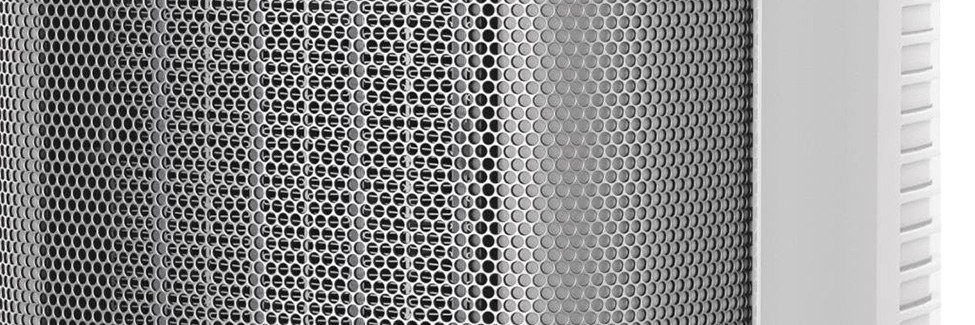
How Do Space Heaters Work?
Whether you’re prone to staying cold or are exposed to a home or office that simply isn’t warm enough, a space heater can be the perfect solution to chase away the chill. However, it’s important to understand as much as possible about the types of portable heaters available so that you can make the best choice for your situation.
There are several factors that determine which type of space heater will work best for you. In fact, your best option may be to utilize a combination of different models to achieve maximum comfort in cold weather.
This post will first help you understand what exactly a space heater is and how it works. It will also explain the different categories of heaters available and outline which types are best for particular situations.
What is a Space Heater?
Space heaters may go by a few different names, but their general purpose is to supplement the main heating system in a house or building. This may be necessary because of inadequate heat output, expensive central heating or an inability to control the ambient temperature.
These heaters come in a variety of shapes, sizes and capacities. Choosing the correct space heater for your needs can be done without stress or worry as long as you understand how each type works and which situations they are appropriate for.
What Are the Different Types of Space Heaters?
Terms such as vented heaters, convection heaters, ceramic heaters, and infrared heaters can make shopping for a space heater seem overwhelming if you’re unfamiliar with the terminology.
In essence, heaters fall into two main categories. The first is electric, and the second is combustion. In most cases, electric heaters are safer and preferable to combustion heaters, especially in enclosed spaces.
Electric space heaters most commonly work using either convection or infrared, so those are the two types we will focus on first.
Many space heaters come with BTU ratings, which stand for British Thermal Units. If you’re curious about the optimal BTUs for your own indoor space, use our heat BTU calculator.
Convection Heaters
Convection heaters work by pulling air from the room over a heated surface to warm it and then pushing it back throughout the room. This process raises the overall temperature of the space and continues until the heater’s thermostat senses that it has achieved the desired temperature. This is common for many popular space heaters and electric wall heaters. The unit will then turn off until the ambient temperature falls to a certain point, which triggers it to turn back on.
There are advantages and disadvantages to this style of space heater.
Pros:
Provides moderate heat
Can raise the temperature of an entire room
Can maintain consistent heating levels
Cons:
Takes time to warm up
Ineffective in poorly insulated areas
Infrared Heaters
These are sometimes referred to as “radiant heaters,” but both terms mean the same thing. They work by producing infrared radiation, which offers a different type of warmth than convection. Rather than heating an entire space, these devices direct heat to bodies or objects that are directly in their path. This makes them ideal personal heat sources for an office or garage setting where it’s impractical to heat the entire room.
As with convection heaters, infrared styles also have advantages and disadvantages.
Pros:
Ideal for personal warmth in an office setting
Energy efficient
Safe for high-traffic areas
Useful in poorly insulated spaces
Cons:
Does not warm the air
Heat can be lost if the unit faces a window
Not suitable for outdoor uses
Gas Heaters
The other category of space heaters consists of combustion-style models. These heaters can be either vented or unvented, but both are less commonly used indoors. They use flammable fuel such as kerosene, propane or natural gas to heat a space.
It is rarely recommended to use an unvented unit indoors. Many states have banned this practice for kerosene heaters, and several have also banned the indoor use of unvented natural gas heaters. This is because they can release unsafe byproducts into the air such as carbon monoxide and nitrogen oxides. When outdoors, these byproducts can harmlessly dissipate, but in an enclosed space, they have nowhere to go.
Vented combustion units are meant to be permanently placed near an outside wall or ceiling so that the exhaust vent can be safely fitted outside of the house. While they are highly efficient for heating a space, they can be unwieldy. They also require regular safety inspections, so most people opt for electric space heaters instead.
Safety Considerations For Space Heater Installation
Each space heater will come with an owner’s manual and its own set of specific safety instructions, but there are some general space heater safety tips you should bear in mind regardless of which unit you purchase.
Look for safety features such as automatic shut-off timers, airflow sensors or tip-over switches. These elements help to minimize the risk of burns and fires.
Heaters should never be placed near flammable materials or loose fabrics like blankets or curtains.
Units should always be placed on a flat, level surface safely away from children and pets.
When possible, space heaters should be plugged directly into a wall outlet. Carefully follow manufacturer instructions regarding the use of extension cords as this can lead to electrical fires otherwise.
If purchased in the United States, be sure that your unit has an approval tag from Underwriters Laboratories. This is typically a large, white tag with a “UL” logo attached to the cord. This is the company that maintains safety standards for electric space heaters.
Purchase a heater that is only as large or powerful as the space requires. A heater that is too powerful can increase electricity consumption and pose a safety risk to anyone in the room.
Final Thoughts
Space heaters can be a great way to provide extra warmth and comfort in cold weather. If used correctly, energy efficient space heaters even help to lower the cost of your monthly electricity bills.
As long as you remember that space heaters are not intended to be a main source of heat and follow general safety guidelines, you can stay comfortably warm and happy no matter how cold it is outside.
Still have questions? Ask an HVAC expert directly via chat or phone.
Published on 2018-09-02 by Ben Travis
Last updated on 2020-12-28


